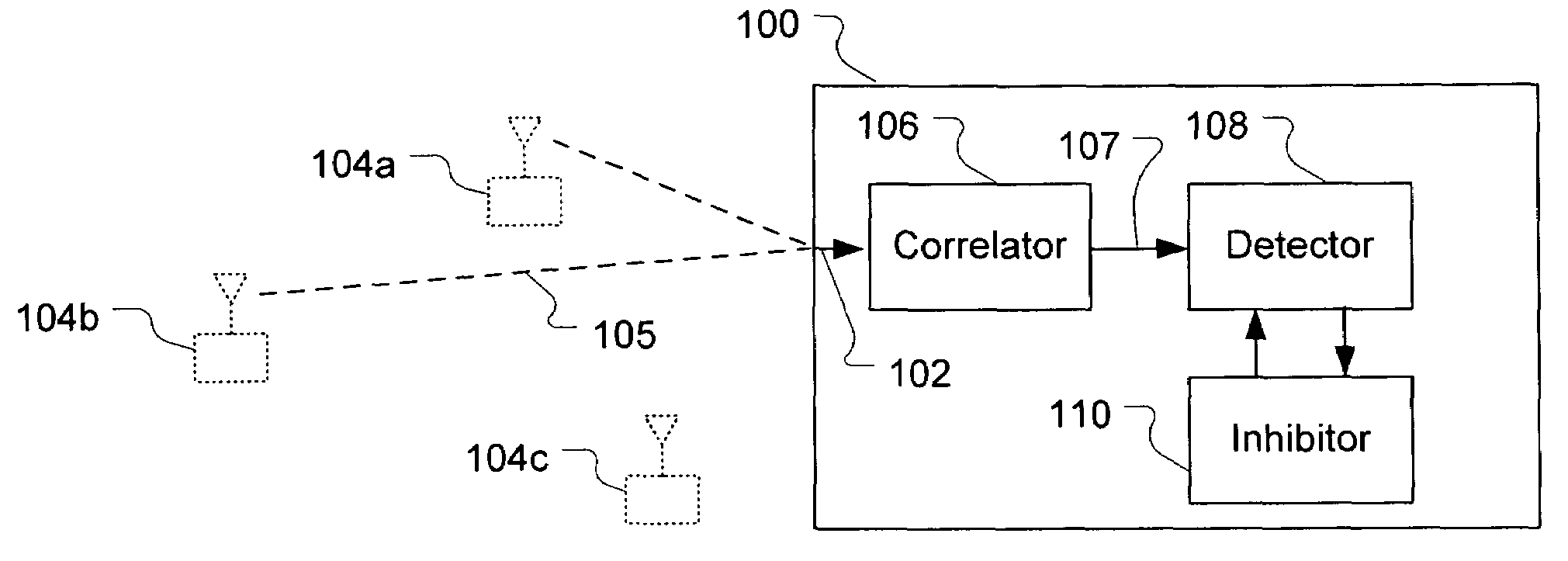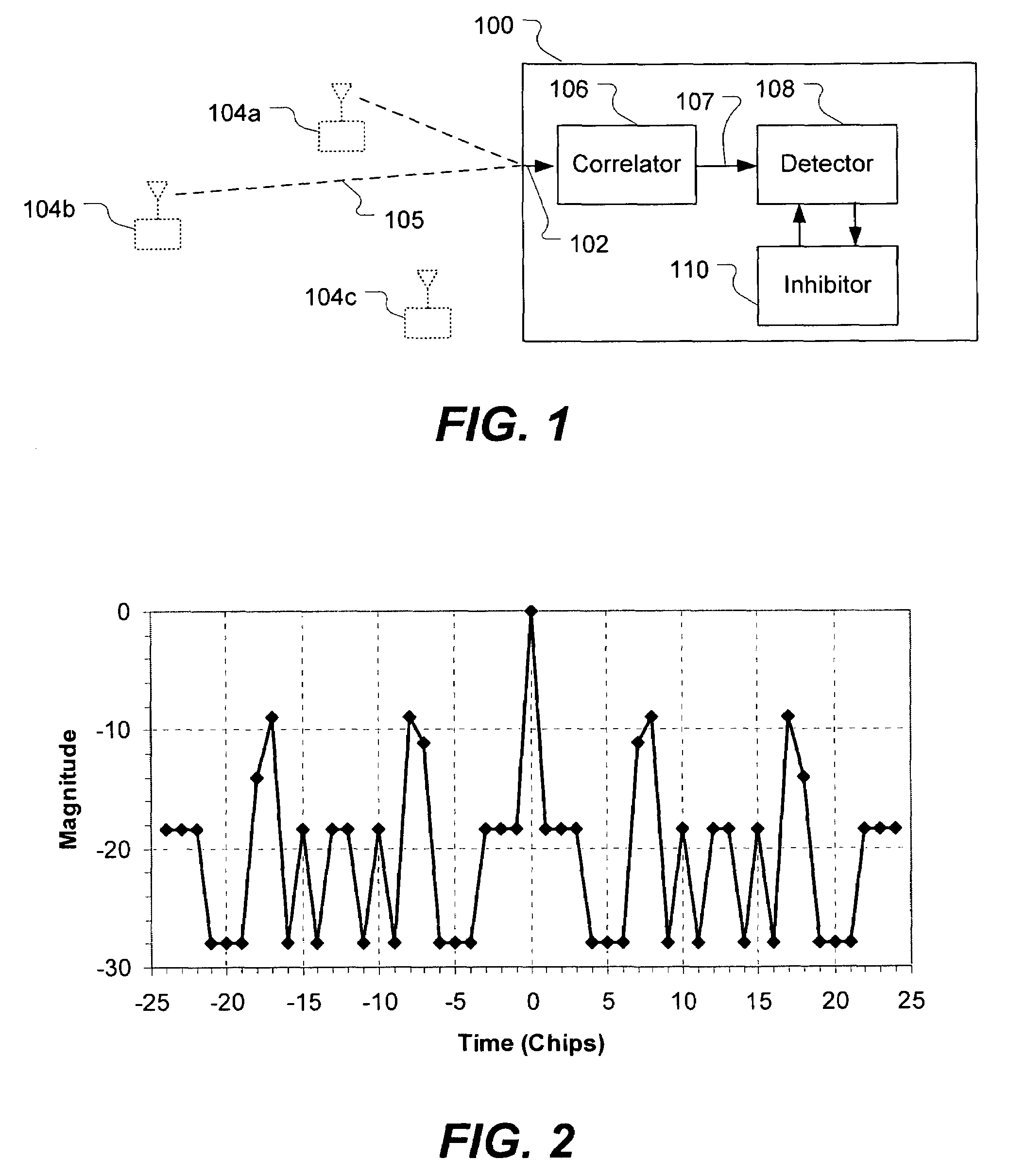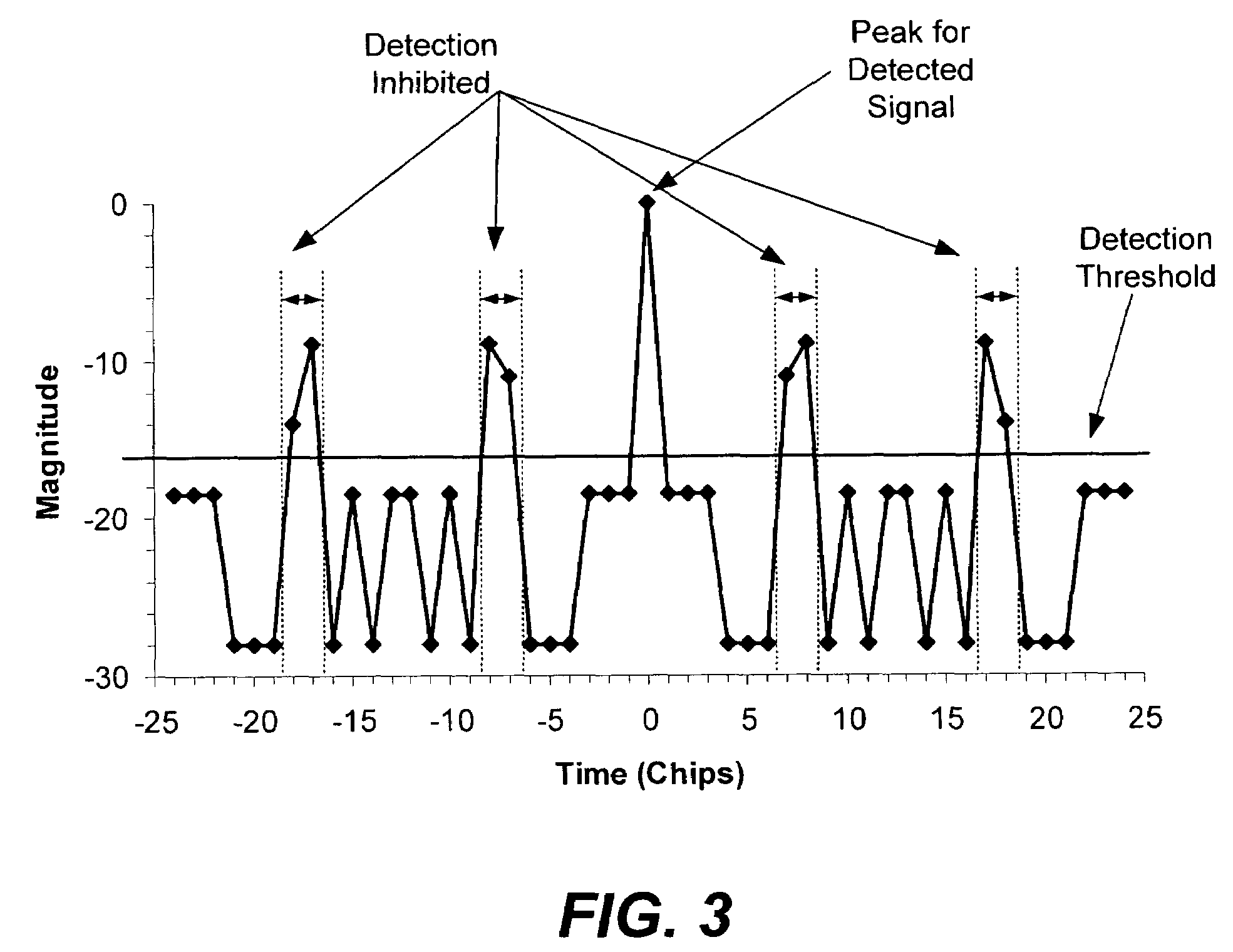Spread spectrum signal detection with inhibiting for known sidelobe locations
a technology of spreading spectrum signal and inhibiting, which is applied in the direction of transmission, electrical equipment, etc., can solve the problems of limited code length, many systems using non-ideal codes, and it is difficult to distinguish a sidelobe from the actual correlation peak
- Summary
- Abstract
- Description
- Claims
- Application Information
AI Technical Summary
Benefits of technology
Problems solved by technology
Method used
Image
Examples
Embodiment Construction
[0022]Reference will now be made to the exemplary embodiments illustrated in the drawings, and specific language will be used herein to describe the same. It will nevertheless be understood that no limitation of the scope of the invention is thereby intended. Alterations and further modifications of the inventive features illustrated herein, and additional applications of the principles of the invention as illustrated herein, which would occur to one skilled in the relevant art and having possession of this disclosure, are to be considered within the scope of the invention.
[0023]FIG. 1 illustrates a system for detecting a spread spectrum signal. The system, shown generally at 100, accepts a received signal 102 in which the spread spectrum signal may be embedded. The spread spectrum signal has a predefined spreading code, and may originate from one of several different transmitters. For example, transmitters 104 may transmit radio signals 105 to the system via a wireless communicatio...
PUM
 Login to View More
Login to View More Abstract
Description
Claims
Application Information
 Login to View More
Login to View More - R&D
- Intellectual Property
- Life Sciences
- Materials
- Tech Scout
- Unparalleled Data Quality
- Higher Quality Content
- 60% Fewer Hallucinations
Browse by: Latest US Patents, China's latest patents, Technical Efficacy Thesaurus, Application Domain, Technology Topic, Popular Technical Reports.
© 2025 PatSnap. All rights reserved.Legal|Privacy policy|Modern Slavery Act Transparency Statement|Sitemap|About US| Contact US: help@patsnap.com



